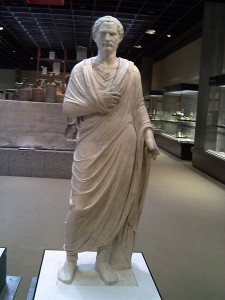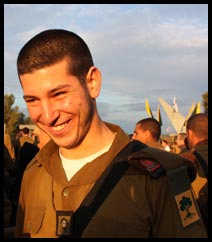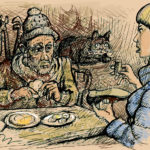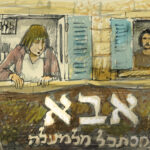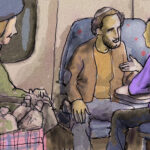Last monthafter Saturday morning services at Congregation Beth Elohim in Brooklyn, I stood up in Rabbi Andy Bachman’s spacious study. I wasn’t sure what to expect. Were the personal stories of life in Jerusalem and Israel-forged humor of my Necessary Stories presentation going to click with the 50 sophisticated New Yorkers I found before me?
I’m happy to say that it went splendidly. From the start, people laughed in the right places—the best indication that they were engaged and entertained. And when the audience started breaking up before I’d had a chance to present my final segment, it wasn’t because they were bored. They explained that the children’s activities being held in parallel were coming to an end and that they had to pick up their kids.
Kudos came later by e-mail: “Haim Watzman transports his audience both in time and place in an authentic, heartfelt and intellectually thought-provoking performance,” wrote Doris Traub. David Greenberg, to whom I owe thanks for helping arrange the appearance, gave me this blurb: ““Haim Watzman brings the Israeli experience to life in a way that a history book never can. He reminded me again why Israel means so much to me. Mr. Watzman’s program was at once funny, thought-provoking, wise and enjoyable.”



